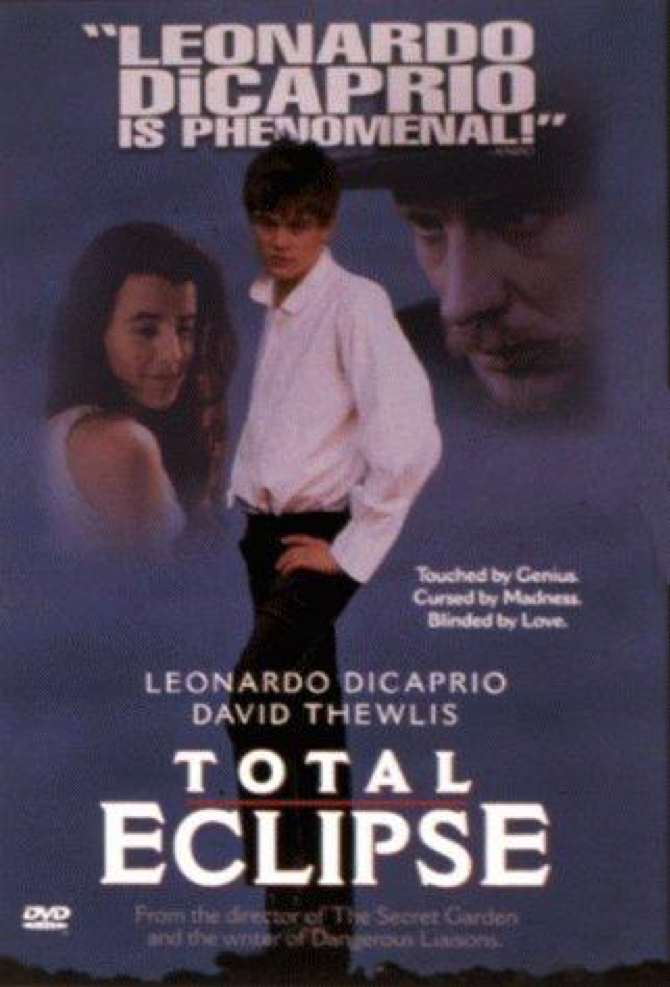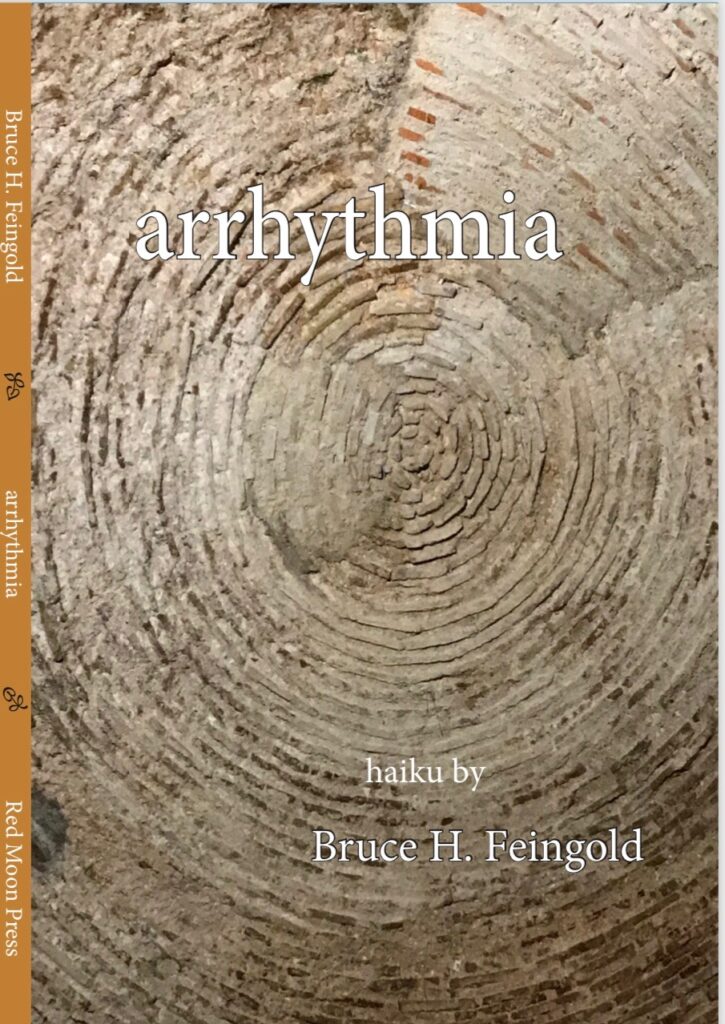
arrhythmia, haiku by Bruce H. Feingold (Red Moon Press 2020) Reviewed by Jeff Kaliss, Poetry Editor
Although I had an unforgettable and life-learning affair with Zen Buddhism when I was a young man, I’m no expert on haiku or any of the associated forms of Japanese poetry, and I have rarely written in those forms. I do remember the thrilling breezy feeling of the ancient haiku I read in English translation, and their placement in books (particularly those by R.H. Blyth) showcasing and inspiring an understanding and appreciation of Zen.
Those breezes blow from time to time, but not consistently, through this brief collection by Berkeley psychologist Feingold. You don’t have to be Zen to travel with Feingold though what is primarily what the title hints at, his own life-affirming hospitalization for and gradual recovery from a severe heart condition. You do have to be open — and a little Zen may help here — to finding forever in Feingold’s moments (“anesthesia/the last leaf/lets go”) and to finding everything in his somethings (“the scar/slowly healing/wildflowers”).
The intimacy afforded us here is personal and brave, and in those regards shares traditions of the best of Western storytelling. Indeed, this is a book to be experienced in its short entirety, so that when you encounter “stayin’ alive/the groom’s parents revive/their disco moves”, the referenced song title takes on a special meaning, aside from cutesy humor. Look in that same poem for the affirmation of family values — siblings, children, parents. Feingold is at least as taken with portraiture and introspection as he is with the refinements of haiku, although his book lists an impressive array of awards (as well as shoutouts to his family and the doctors and staff of John Muir Hospital).
For me, arrhythmia is an exercise in poetry better read and seen than heard, which says something about its relationship to the crafting of language. The impact of the few poems inspired by a hike in the Andes depends as much on the careful positioning of the spare lines across the pages as it does on what’s said. That’s a visual payoff you wouldn’t usually be looking for.
Not all attempts reach their intended peak, as when Feingold whimsically combines allusions to Donald Trump, a historical dream, and sex. But his irrefutable sincerity ultimately invokes our forgiveness and commands our attention.
Mill Valley Literary Review featured several of Feingold’s haiku in 2014.
END
The following are from previous issues:
From Fall 2020 Issue #17.
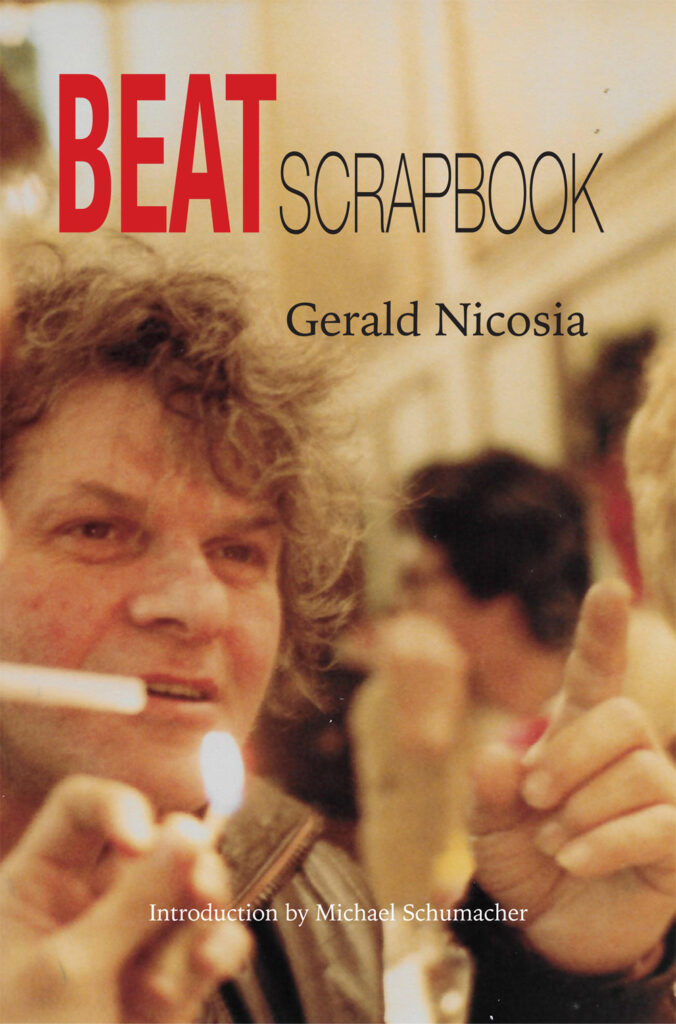
Gerald Nicosia’s Beat Scrapbook
reviewed by Poetry Editor Jeff Kaliss
The title of Gerald Nicosia’s Beat Scrapbook (Brooklyn: Coolgrove Press, 2020) is both too modest and too limiting. I state that to invite you in, not to put you off.
For sure, this is a wonderfully caring collection of poems by a writer acknowledged for an acclaimed biography of Jack Kerouac and the editing of collections by Bob Kaufman and Ted Joans. He’s numbered surviving poets of the Beat era among his mentors and friends. And as the title suggests, many of Nicosia’s own poems here function as portraits along a loving leisurely stroll through a museum of Beat bards. Just as with a docent’s tour of great paintings from the Dutch Golden Age — a Rembrandt self-portrait, or Vermeer’s Girl with a Pearl Earring — Nicosia has us feeling we’re getting to know these persons, even if we haven’t had his personal acquaintance with them.
That’s partly because Nicosia holds a gift of storytelling which unwraps and raps much better than do most poets. It’s an element of craft more commonly associated with prose fiction, and it’s worked through the deployment of detail and description, as showcased in THE GHOST OF KEROUAC, Nicosia’s poetic voyage to the titular poet’s hometown in northern Massachusetts: We get the bite of the autumn air and the pungent smell of car exhaust, as well as the vision of a young Kerouac, with whom “It’s like you’re walking with me/Listening to my woes/And telling me your own.”
Take note of the empathy within that passage, and realize that in all these accounts of older writers, you’re also getting the measure of Nicosia, blessed with the rare gift of being able to birth a book with a living, palpable pulse, which revivifies those of his subjects (most of them) who’ve preceded him into death, by taking us into the stuff of their lives, as squalid and unstable as that may have often been.
Starting with THE BEAT FATHER OF CHICAGO POETRY, Nicosia’s homage to Paul Carroll from his own hometown, he affects a touching regret for the “extinction” of an older school of poetry, and of some of the contemporaneous human values. In POEM ON SEEING AND HEARING GARY SNYDER AT ALMOST 90 AT THE MILL VALLEY LIBRARY, Nicosia (who lives in Marin County) is made to long for “the streets and pads of a gone world”, and he’s inspired by Snyder to point out to us that, “we need . . . to save/Every precious human being/And the precious memories/They carry with them/Or there will be nothing left/Anywhere in the universe/Worth saving.”
This point of view derives inevitably from Nicosia’s arrival in the Bay Area when most of the stalwarts of the Beat generation were long past their glory years. When he borrows from their style and language — telling Tony Scibella, “Hope you dig death” — it feels more like embracing a tradition than aping it. As with many Beats, Nicosia eschews the artifice of the academy; his presentation is accessible and often conversational, though there are occasional breathtaking vistas, as in JULY VISIT WITH THE DEAD IN HILLSIDE, ILLINOIS, written after his mother’s death, where he’s “just a guest for now. . . born again by dying/into this one great family/of sorrowful Man.” You also won’t find Nicosia relying on gimmicks, but A POET’S GROCERY LIST is a stunning conflation of a supermarket receipt and the elements of Ted Joans’s life and personality.
Similarly, Nicosia is not an idolater. He tells us the truth about Gregory Corso, including his notorious interpersonal difficulties, but so lovingly that we can’t help but like the guy. A visit with Charles Bukowski is related, aptly in short lines and street jargon, and we come to marvel at how “Life can still be this good/ when it’s also so awfully/ awfully bad.”
As I’d inferred, Nicosia’s soul and skill in this brief volume stretch beyond the Beats. There’s a delightful scene of a brave gay dalliance by George Dowden with fellow poet Walt Whitman. In poems like DEATH ROW PENNSYLVANIA, Nicosia manifests a Zen-like resonance with all sorts of suffering, and an opposition to prejudice, including economic and racial.
In SEPTEMBER 19, 1996 Nicosia reaches back to his father’s birth, then proceeds, through a quick and commanding three-generation family history, to his own daughter. There are multiple accounts of his father, whom the poet feared some. But the son takes to heart the paternal lesson that, “Real life is the best teacher” and remembers now that, “sometimes/when he said it/he had to look away/because his eyes/were filled/with tears.” There’s also a strong and evocative epistle to a lover: “you didn’t want to use me/you used me anyway and I was glad.”
Many poets, including some of the Beats, get lost in the artifice of style, in the process risking the loss of both their subject and the attention of their listeners and readers. Nicosia has more than his share of style, but in the idiomatic sense of the word. Take a look at his summing up of THE BEAUTIES OF MY GENERATION, in which he includes the creative spirits he writes about, somewhat his senior. He declares, “we gave back more than we got/gave a whole nation new dreams, turned old men to children/and made old women glad, as the saying goes —/gave the earth a fresh spin, though no one knew toward what —.”
On the blank pages which follow this final poem, I find myself seeking yet more of Nicosia’s guidance on how things have been, and what things should be.
***
NOTE: The release date for Beat Scrapbook is November 15 by Small Press Distribution. Available Amazon. Limited signed copies may be available in advance, contact the author at gnicosia@earthlink.net. 113 pages, $19.95.
“A great, lyrical portrait of an era…a spot-on recreation about a great time of history…and I enjoyed the sheer trip of it. Beautifully observed writing—the emotions in the story are true and moments of life are rendered with clarity.” Louis B. Jones, author of four New York Times Notable Books, including Ordinary Money and Particles of Luck
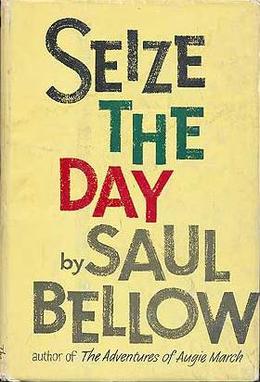
We at MillValleyLit have been reading more poetry while cowering in place, and along with the rest of the mundane world, yep, watching more TV and movies. To assuage our guilty pleasures, we have found a way to combine both in a silver linings playbook. Here are the:
BEST POET MOVIES
Total Eclipse
Young, wild poet Arthur Rimbaud and his mentor Paul Verlaine engage in a fierce, forbidden romance while feeling the effects of a hellish artistic lifestyle. Director: Agnieszka Holland , Writer: Christopher Hampton (screenplay) Stars: Leonardo DiCaprio as Arthur Rimbaud, David Thewlis as Paul Verlaine (Remus Lupin in the Harry Potter film series and Ares in Wonder Woman) and Romane Bohringer. Based on a 1967 play by Christopher Hampton, who also wrote the screenplay. Based on letters and poems, it presents a historically accurate account of the passionate and violent relationship between the two 19th-century French poets at a time of intense creativity for both.
A visually appealing, but theatrical to the point of “stagy,” insight into two hard-drinking, possibly mad poets. DiCaprio is brilliant. The film stock, or the lighting director, appears to have changed when they setting moves from France to England. An uneven but worthwhile movie.
Other literary figures Leonardo portrayed in his early movie career include the titular character in the hip redo of Shakespeare’s Romeo + Juliet (1996), directed by Baz Luhrmann; and a drug addict in one of his most challenging roles as Jim Carroll in The Basketball Diaries (1995). (Jim Carroll lived in Bolinas, CA near Mill Valley at one time) This was a role which the late River Phoenix originally expressed interest in (and perhaps , considering his overdose, would have been better suited). Later Leonardo was tragic Jay Gatsby in The Great Gatsby (2013).
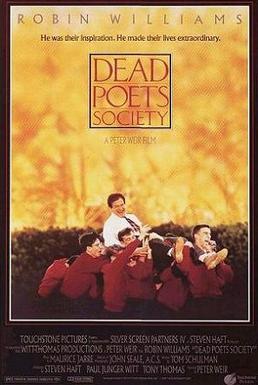
Dead Poets Society
Dead Poets Society is a 1989 American drama film directed by Peter Weir, written by Tom Schulman, and starring Robin Williams. Set in 1959 at the fictional elite conservative Vermont boarding school Welton Academy, it tells the story of an English teacher who inspires his students through his teaching of poetry. John Keating, played by the late, great local Robin Williams, who had a home in Tiburon, CA. Keating famously says: “Carpe diem. Seize the day, boys. Make your lives extraordinary.”
Dead Poets Society remains a beloved film despite its faults, despite its foreshadowing of Robin Williams’ suicide, and despite its controversial Oscar Best Screenplay win. It beat out four arguably superior-constructed films, Spike Lee’s Do the Right Thing, Woody Allen’s Crimes and Misdemeanors, Nora Ephron’s When Harry Met Sally…, and Steven Soderbergh’s sex, lies & videotape.
Despite critics’ complaints that Keating’s essential credo to his students, “Seize the Day,” the wimpy students could not even pinch the day when they absolutely needed to save their teacher. However, this moment of betrayal is what gives the movie its realistic juice. Besides writer Tom Schulman receiving an Academy Award for Best Original Screenplay, Williams received a Best Actor nomination for a measured inspirational performance.
John Keating is a nod to 19th-century Romantic poet John Keats, who has his own movie: Jane Campion’s gorgeous film Bright Star (see below).
“O Captain! My Captain!” is an extended metaphor poem written in 1865 by Walt Whitman, about the death of American president Abraham Lincoln. After actor Robin Williams’ death in August 2014, fans of his work used social media to pay tribute to him with photo and video reenactments of the Dead Poets Society “O Captain! My Captain!” scene.
Literary notes: Includes a play within a play – A Midsummer Night’s Dream. Williams also previously played the lead in the poorly received TV movie version of Seize the Day (1986). (Robin’s early, rare dramatic role—after Garp.) Seize the Day is a novel by Saul Bellow(1956), his fourth, which was also published as Carpe Diem. Thankfully, the actual book was not printed in Latin.
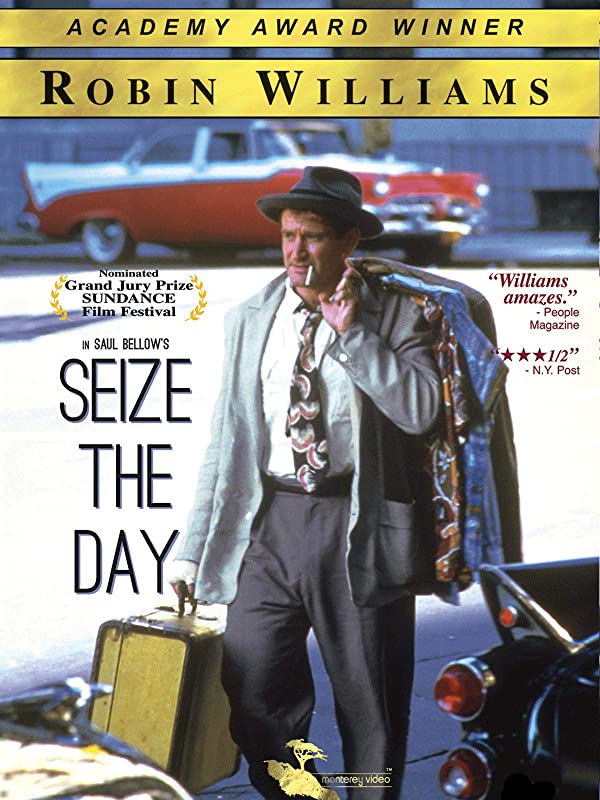
-
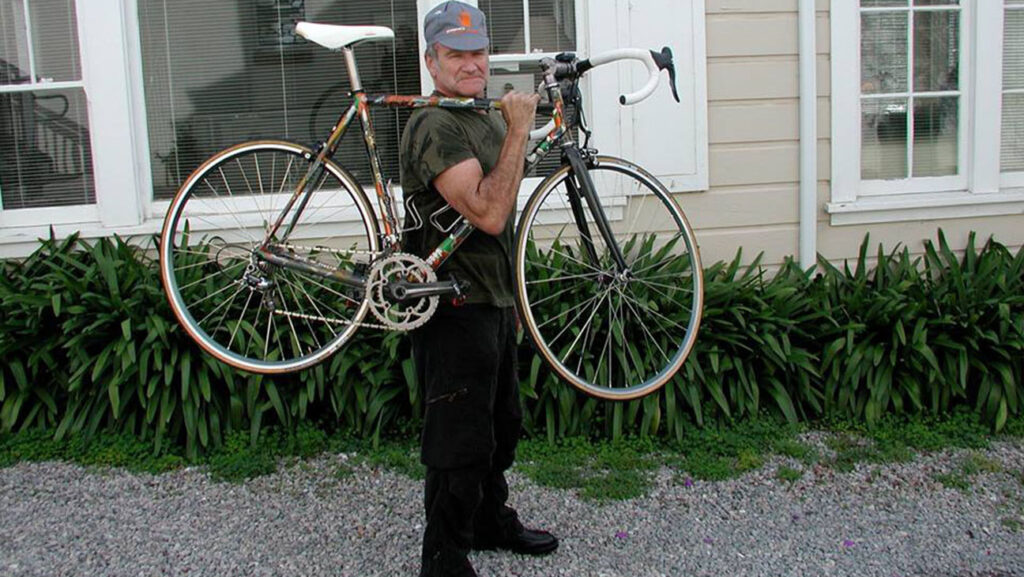
Courtesy Above Category Cycling
Seemingly forgotten now, Bellow was awarded the Pulitzer Prize, the Nobel Prize for Literature, and the National Medal of Arts. He is the only writer to win the National Book Award for Fiction three times. Much like Joyce’s masterpiece Ulysses, Seize the Day follows a Jewish protagonist, through the course of one day while simultaneously painting the larger portrait of the character’s life history. Called ‘the most Russian novella written in America’ by critic James Wood, one of Seize’s greatest successes is the enormous accumulation of ideas, social, spiritual and psychological commentary, and pure literary vitamins packed into this snack of a novel that rivals the depth of novels three to four times it’s length, not to mention the enrapturing prose that pulls this story along.
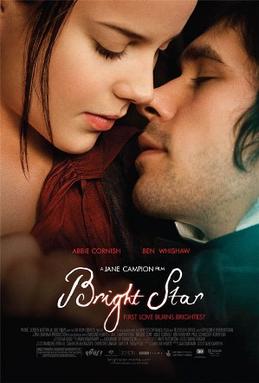
Bright Star
Bright Star is a 2009 British-French-Australian biographical fiction romantic drama film based on the last three years of the life of poet John Keats and his romantic relationship with Fanny Brawne. It stars Ben Whishaw as Keats and Abbie Cornish as Fanny. It was directed by Jane Campion, who wrote the screenplay inspired by Andrew Motion’s biography of Keats; Motion served as a script consultant on the film. The film was in the main competition at the 62nd Cannes Film Festival, and was first shown to the public on 15 May 2009. The film’s title is a reference to a sonnet by Keats titled “Bright star, would I were steadfast as thou art”, which he wrote while he was with Brawne.
In addition to “Bright Star” several other poems are recited in the film, including “La Belle Dame sans Merci” and “Ode to a Nightingale”. Both Campion and Whishaw completed extensive research in preparation for the film. Many of the lines in the script are taken directly from Keats’ letters.
These reviews drew on various web sources: Wikipedia, Goodreads, IMDb, etc. with editing and additional commentary by J. Macon King.
